If you’re like me, you’re still in denial that Game of Thrones is over. The epic HBO series based on George R.R. Martin’s A Song of Ice and Fire books brought us so many good times: Tyrion slapping Joffrey, Arya baking a Frey pie, Cersei scooching past the Hound and the Mountain… What’s a bereft GOT fan to do? Learn about the real history behind Game of Thrones!
Martin has always said that the Wars of the Roses, a series of battles fought among English nobles between 1455 and 1485, served as inspiration for his plot. There’s even a TED-Ed talk exploring the connections. I’ve investigated some of the real history behind Game of Thrones and suggested books about the real people that might help cure your GOT withdrawal.
The real history behind Game of Thrones is based on two warring families, the Yorks and Lancasters (aka Starks and Lannisters).
First, a few disclaimers: I’m not a historian, just an enthusiastic nerd. This post focuses only on the Wars of the Roses part of the real history behind Game of Thrones. To get into all the historical influences on GOT would take many thousands of words.
It’s also important to note that many of Martin’s historical influences are white. People of color lived in medieval Europe but are often left out of historical fiction and/or the historical record. And much historical fiction about this time period also tends to be written by white authors. In recognition of that, where possible, I’ve included some read-alikes by authors of color.
Finally, obviously, SPOILERS AHEAD.
Cousins at War
Real Historical Figures: Richard II, Henry IV, and his son and grandson, Henry V and Henry VI
Game of Thrones Equivalents: Aerys II Targaryen, Robert Baratheon
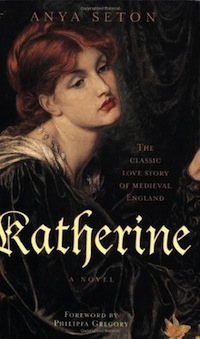 The Wars of the Roses didn’t begin until 1455, but the seeds were sown many years earlier with a succession crisis. King Edward III had five sons who survived to adulthood, and the oldest of those, Edward, known as the Black Prince, had his own son, Richard. Seems simple enough, right? Father dies and son takes the throne, repeat. But the Black Prince died in 1376, a year before his father. When Edward III died, that left the throne to his 10-year-old grandson, Richard II. Richard’s uncles were not thrilled, and there were a lot of questions about who would succeed him. (To read more about Edward III and his many sons, check out Anya Seton’s classic novel Katherine.)
The Wars of the Roses didn’t begin until 1455, but the seeds were sown many years earlier with a succession crisis. King Edward III had five sons who survived to adulthood, and the oldest of those, Edward, known as the Black Prince, had his own son, Richard. Seems simple enough, right? Father dies and son takes the throne, repeat. But the Black Prince died in 1376, a year before his father. When Edward III died, that left the throne to his 10-year-old grandson, Richard II. Richard’s uncles were not thrilled, and there were a lot of questions about who would succeed him. (To read more about Edward III and his many sons, check out Anya Seton’s classic novel Katherine.)
Unfortunately for Richard, he wasn’t a successful king. His reign was marred by unpopular taxes and a peasants’ revolt. In 1399, he was deposed by his cousin Henry, another grandson of Edward III, who used that heritage to support his claim.
The closest GoT equivalent for Richard II is Aerys II Targaryen. In A Game of Thrones we learn that years earlier, Robert Baratheon claimed the throne of Westeros after leading a rebellion against Aerys (the Mad King). Robert cited his royal ancestry (a Targaryen grandmother) in order to legitimize his own claim.
Was Richard II truly unfit to rule? Historians have debated for years about Richard’s mental state, with some claiming he may have had narcissistic personality disorder or another mental illness. We’ll never know for sure, but he was considered something of a tyrant. In 1400, he died in captivity amid suspicious circumstances (not killed by his own guard like Aerys, though). His story is chronicled in Shakespeare’s play Richard II.
Henry IV was king until he died in 1413, at which point his son, Henry V, took over. Henry V was a successful military leader, but he died young, leaving his baby son in charge (supervised by a council of nobles, of course). And it was because of Henry VI’s weak personality and tenuous grasp on power that the Wars of the Roses officially began.

Mark Addy as Robert Baratheon on Game of Thrones. Image from IMDb.
In my mind, GoT character Robert Baratheon is a hybrid of these three Henrys. Like Henry IV, he led a rebellion and won the throne—and like Henry V, he was known to be a strong military campaigner. But as we’re about to find out, he and Henry VI had their own tragic similarities: a personality unfit to rule and a group of powerful, manipulative nobles with agendas.
This is the point at which Conn Iggulden’s epic historical fiction trilogy begins, starting with Wars of the Roses: Stormbird. Jean Plaidy, a prolific author, also has several novels about this period of history. Star of Lancaster is all about Richard II, while Epitaph for Three Women chronicles what happened after Henry V died.
Lancaster vs. York
Real Historical Figures: Henry VI and Margaret of Anjou; Richard of York and Cecily Neville
Game of Thrones Equivalents: Robert Baratheon and Cersei Lannister; Ned Stark and Catelyn Tully
It’s 1453. Henry VI is on the throne, but there have been years of unrest. Disgruntled nobles are feuding, and everyone thinks Henry’s advisors have too much influence over him. Even though he has a newborn son, Henry himself has had a mental collapse. A regency government has to be set up to rule the country, and it’s headed up by a powerful duke from the north of England: Richard of York. And believe it or not, Richard is also descended from good old Edward III and has his own solid claim to the throne.

Sean Bean as Ned Stark, aka Richard of York. Image from IMDb.
Sound familiar? Game of Thrones opens on a similar situation. Robert Baratheon’s top advisor has died, and Robert is seeking help from his old northern friend, Ned Stark. As for Robert’s mental state, well, he drinks a lot, has some weird conspiracy theories about a young Targaryen girl living on another continent, and basically lets Cersei Lannister and her father handle the details of governing.
 As their names suggest, the feuding Starks and Lannisters are twisted versions of the Yorks (represented by a white rose) and Lancasters (a red rose). Like Richard of York, Ned Stark married a woman from another influential noble house, Catelyn Tully, while Henry VI and Robert Baratheon both made strategic alliances of their own. Henry’s wife Margaret of Anjou was disparaged as aggressive and scheming, the true power behind the throne. And, well, we all know what Cersei is like. She’s one of the most fascinating characters in the series, likely inspired by a whole host of famous queens. Margaret of Anjou was similarly interesting—Susan Higginbotham explores why in The Queen of Last Hopes.
As their names suggest, the feuding Starks and Lannisters are twisted versions of the Yorks (represented by a white rose) and Lancasters (a red rose). Like Richard of York, Ned Stark married a woman from another influential noble house, Catelyn Tully, while Henry VI and Robert Baratheon both made strategic alliances of their own. Henry’s wife Margaret of Anjou was disparaged as aggressive and scheming, the true power behind the throne. And, well, we all know what Cersei is like. She’s one of the most fascinating characters in the series, likely inspired by a whole host of famous queens. Margaret of Anjou was similarly interesting—Susan Higginbotham explores why in The Queen of Last Hopes.
Over the next few years, the relationship between Richard of York, Henry VI, and Margaret of Anjou deteriorated—partially because Henry kept having mental breakdowns, thought today to have been schizophrenia—and finally, fearing that Margaret was openly plotting against him, Richard raised an army to depose the king. After several years of back-and-forth, including a period where Henry was taken prisoner by Richard, the country was in open war. Richard intended to assert his own claim to the throne.
Unfortunately, he never got the chance, as he was killed in battle in 1460. His head was displayed on a pike for all to see, just like Ned’s.
The Next Generation
Real Historical Figures: Edward IV and his wife, Elizabeth Woodville; his brothers, Richard III and George, Duke of Clarence
Game of Thrones Equivalents: Robert Baratheon and Cersei Lannister; Robb Stark and Talisa (Jeyne Westerling in the books); Stannis and Renly Baratheon
The Lancasters may have thought they were safe, but Richard of York’s son, Edward, took up his father’s cause—and his claim to the throne. After a series of battles, Edward and his forces entered London, where he was informally declared King Edward IV. Despite urging from his advisors to marry a French princess, he met and secretly wed a commoner, Elizabeth Woodville.
So, here’s where sorting out the real history behind Game of Thrones gets complicated. Young Edward IV sounds a lot like Robb Stark. After Ned’s death, he goes to war with the Lannisters and is declared King in the North. He even marries a woman he loves instead of the Frey to whom he’s betrothed. But remember how I said that all those Henrys were likely the inspiration for Robert Baratheon? The end of Edward IV’s life also shares some elements of Robert’s. This is where Martin excels: blending together recognizable arcs from history to give us something uniquely twisted.
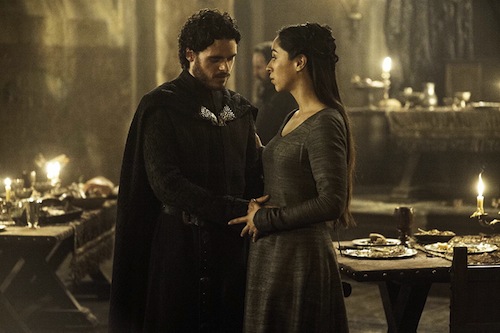
Richard Madden and Oona Chaplin as Robb and Talisa Stark, aka Edward IV and Elizabeth Woodville. Image from IMDb.
Edward was known to be a man of voracious appetites (for food…and sex outside his marriage), as was Robert. Edward also had two troublesome brothers, Richard, Duke of Gloucester, and George, Duke of Clarence. Similar to Stannis and Renly Baratheon, each one wanted the throne for himself. Meanwhile, Edward IV still had to contend with Henry VI, Margaret, and their son, living in exile in France (just like those pesky Targaryens). And if all that weren’t enough, his nobles resented his wife, Elizabeth Woodville, and her brother Anthony, who had been given quite a bit of power and land (Cersei and Jaime strike again). All of this is fictionalized in Philippa Gregory’s books The White Queen and The Lady of the Rivers.
It’s not quite the War of the Five Kings—more like the War of a Bunch of Cousins Who All Have a Pretty Good Claim to the Throne. In any case, Edward IV had a much better ending than Robb Stark. He kept his throne and put down his brother George’s rebellion. He also had Henry VI murdered. But in 1483, he died unexpectedly young… throwing the realm into turmoil yet again.
Who is Richard III?
Real Historical Figure: Richard III
Game of Thrones Equivalents: Theon Greyjoy, Stannis Baratheon, Tyrion Lannister
Edward IV’s 12-year-old son, Edward V, assumed the throne after his death. And as we learned from Richard II, a child rarely makes an effective king. Young Edward’s uncle Richard, Duke of Gloucester, was named Lord Protector. He used that power to execute a bunch of people, claim Edward IV and Elizabeth’s marriage was illegitimate, and seize the young king, sending him to the Tower of London with his younger brother. The two became known as “the princes in the tower.” Not long after Richard declared himself King Richard III, the two princes disappeared.
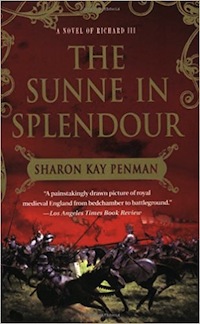 What happened to them has been a matter of contentious historical debate for hundreds of years. Richard is usually blamed for their deaths, thanks to Shakespeare’s characterization of him as a power-hungry usurper in Richard III. Sharon Kay Penman offers a more nuanced take on the situation in The Sunne in Splendor, as does Anne Easter Smith in A Rose for the Crown.
What happened to them has been a matter of contentious historical debate for hundreds of years. Richard is usually blamed for their deaths, thanks to Shakespeare’s characterization of him as a power-hungry usurper in Richard III. Sharon Kay Penman offers a more nuanced take on the situation in The Sunne in Splendor, as does Anne Easter Smith in A Rose for the Crown.
At this point, history and Game of Thrones don’t overlap quite so neatly. If young Edward IV is the Robb Stark equivalent, who does that make Richard III? One possible contender is Theon Greyjoy. Raised as Robb’s brother, he betrays his adoptive family by kidnapping their two remaining legitimate sons, Bran and Rickon, and claiming they’ve been executed.
Or, if we think of Edward IV as Robert, Richard becomes Stannis Baratheon, who thinks he’s the rightful heir because his nephews, Joffrey and Tommen, are illegitimate.
And finally, we have Tyrion Lannister. Tyrion shares many of the traits we’re familiar with from film and TV portrayals of Richard III: he has a physical disability; he’s clever and scheming; he’s accused of murdering his nephew. But Tyrion doesn’t seek the throne for himself, unlike Richard.
The Last Targaryen and the First Tudor
Real Historical Figures: Henry VII and his mother, Margaret Beaufort; his wife, Elizabeth of York
Game of Thrones Equivalents: Daenerys Targaryen, Jon Snow
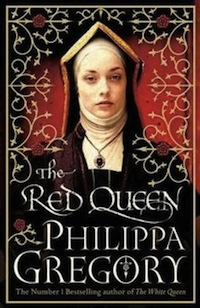 Richard III held the throne for only two years. While all of these many battles had been going on, yet another man with a claim to the throne was watching and waiting from France. (Blame Edward III for having so many children.) Henry Tudor traced his lineage through his mother, Margaret Beaufort, back to Edward III. Because this was through the maternal line, it wasn’t the strongest case, but he was the only male Lancaster left. And by all accounts, Margaret was fiercely determined to see her son on the throne. Henry had been raised in France hearing the story of his destiny as the rightful king. Read Philippa Gregory’s The Red Queen and Livi Michael’s Succession for more details.
Richard III held the throne for only two years. While all of these many battles had been going on, yet another man with a claim to the throne was watching and waiting from France. (Blame Edward III for having so many children.) Henry Tudor traced his lineage through his mother, Margaret Beaufort, back to Edward III. Because this was through the maternal line, it wasn’t the strongest case, but he was the only male Lancaster left. And by all accounts, Margaret was fiercely determined to see her son on the throne. Henry had been raised in France hearing the story of his destiny as the rightful king. Read Philippa Gregory’s The Red Queen and Livi Michael’s Succession for more details.
And who does all this sound like? Daenerys Stormborn of the House Targaryen, First of Her Name, the Unburnt, Queen of the Andals and the First Men…you know the rest. The TV version of Dany is a hybrid of Margaret and Henry. She has Margaret’s single-minded determination plus Henry’s magnetism and ability to rouse people to his cause, as seen in Philippa Gregory’s The White Princess and Joanna Hickson’s The Tudor Crown.
Because Henry’s claim was so tenuous, he had to take the extra step of agreeing to marry Elizabeth of York, the daughter of Edward IV, should he win the throne. Elizabeth was a former princess, the oldest child of Edward IV and Elizabeth Woodville, and the niece of Richard III. She had her own pretty good claim to the throne. As did Jon Snow. If only Dany and Jon had managed to work out their differences and get married, they could have had a stable joint reign, the way Henry and Elizabeth did once Henry defeated Richard III at the Battle of Bosworth Field. And with that, the Wars of the Roses were over.
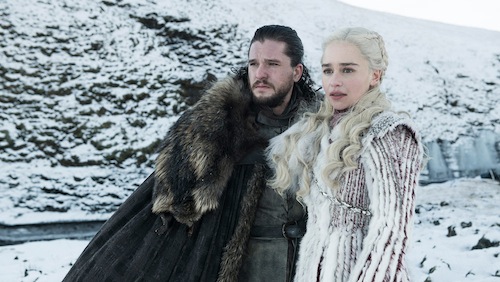
Kit Harington as Jon Snow and Emilia Clarke as Daenerys Targaryen, aka Elizabeth of York and Henry VII. Image from IMDb.
It’s Not Over Yet
Real Historical Figures: Henry VIII and his children, Edward VI, Mary I, Elizabeth I
Game of Thrones Equivalents: Daenerys Targaryen; Bran, Sansa, and Arya Stark
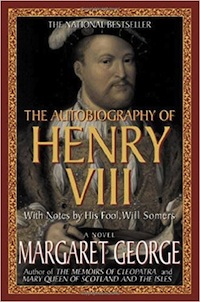 As we know, Game of Thrones doesn’t end with a marriage between a Stark and a Lannister, but with the crowning of a random kid who claims he’s a raven. Let’s let history explain this one. Imagine Dany is a hybrid of Henry VII and his son, Henry VIII. She has Henry VII’s basic life story paired with Henry VIII’s charisma and, later, his paranoid thoughts and burning desire to do whatever the heck he wants with no input from the Pope (or in Dany’s case, her advisors). Henry VIII even had an older brother who was supposed to be king but died, like Dany’s brothers Rhaegar and Viserys. Margaret George’s carefully researched novel The Autobiography of Henry VIII: With Notes by His Fool, Will Somers is a good look into what he was like.
As we know, Game of Thrones doesn’t end with a marriage between a Stark and a Lannister, but with the crowning of a random kid who claims he’s a raven. Let’s let history explain this one. Imagine Dany is a hybrid of Henry VII and his son, Henry VIII. She has Henry VII’s basic life story paired with Henry VIII’s charisma and, later, his paranoid thoughts and burning desire to do whatever the heck he wants with no input from the Pope (or in Dany’s case, her advisors). Henry VIII even had an older brother who was supposed to be king but died, like Dany’s brothers Rhaegar and Viserys. Margaret George’s carefully researched novel The Autobiography of Henry VIII: With Notes by His Fool, Will Somers is a good look into what he was like.
After Henry VIII’s death, the throne went to his only son, Edward VI, a sickly, scholarly child, just like Bran. And Edward had two sisters full of personality: Mary, who like Sansa was dedicated to her people (Catholics) and Elizabeth, who had a long, stable reign full of colonization (hi, Arya).
So if the series were to continue, what might come next for Westeros? Well, when Elizabeth I died, the crown passed to her cousin beyond the (Hadrian’s) wall: James VI of Scotland. Looks like Jon Snow shouldn’t count on a peaceful retirement.
But Wait! What About MY Favorite Character?
The real history behind Game of Thrones is a huge, sprawling epic with hundreds of important characters—and so is GoT itself! Not everyone made it into this post. But here’s a quick rundown of some books to read based on a few other GoT characters.
The Wall and the Wildlings
 Try John Lanchester’s new dystopian novel The Wall. Books set in Scotland, like Diana Gabaldon’s Outlander or Juliana Gray’s A Strange Scottish Shore, are a good bet. There are about a million romance novels with Scottish heroes very much like Tormund Giantsbane, if that’s your jam—Suzanne Enoch’s It’s Getting Scot in Here is a new, fun one. And finally, check out Those Who Run in the Sky, Aviaq Johnston’s YA novel based on traditional Inuit stories, and Why the Monster by Rachel and Sean Qitsualik-Tinsley, a sci-fi epic similarly based on Inuit culture. (Disclaimer: I used to work for the publisher of the last two books.)
Try John Lanchester’s new dystopian novel The Wall. Books set in Scotland, like Diana Gabaldon’s Outlander or Juliana Gray’s A Strange Scottish Shore, are a good bet. There are about a million romance novels with Scottish heroes very much like Tormund Giantsbane, if that’s your jam—Suzanne Enoch’s It’s Getting Scot in Here is a new, fun one. And finally, check out Those Who Run in the Sky, Aviaq Johnston’s YA novel based on traditional Inuit stories, and Why the Monster by Rachel and Sean Qitsualik-Tinsley, a sci-fi epic similarly based on Inuit culture. (Disclaimer: I used to work for the publisher of the last two books.)
The Greyjoys
Explore Viking tales like Jane Smiley’s The Greenlanders and Margaret Elphinstone’s The Sea Road.
Arya, Brienne, and Sansa
You want Tamora Pierce. Start with Alanna: The First Adventure, the first book in the classic YA fantasy series. There’s also Nnedi Okorafor’s Akata Warrior, about a girl who joins a mysterious secret society (no word on whether they take faces from corpses). If a complicated relationship between two sisters is the kind of thing you’re missing after GoT, you could check out Yaa Gyasi’s Homegoing or Boy, Snow, Bird by Helen Oyeyemi.
Grey Worm, Missandei, and the Essos Characters
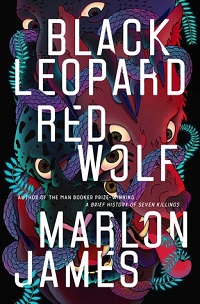 Sabaa Tahir’s An Ember in the Ashes is a good pick for you! Or there’s Marlon James’s Black Leopard, Red Wolf, which is being marketed as an “African Game of Thrones.“
Sabaa Tahir’s An Ember in the Ashes is a good pick for you! Or there’s Marlon James’s Black Leopard, Red Wolf, which is being marketed as an “African Game of Thrones.“
The Night King and Other Magical Elements
Obviously, there were no dragons or ice zombies running amok in medieval Britain. But if the White Walkers (RIP) and the balance between magic and medieval realism were your favorite parts of the show, check out Kazuo Ishiguro’s The Buried Giant, Dan Simmons’s The Terror, N.K. Jemisin’s The Fifth Season, Lauren B. Davis’s Against a Darkening Sky, and Zen Cho’s Sorcerer to the Crown.
Littlefinger, Varys, and Other Schemers
 If you seek novels that subvert your expectations at every turn, I recommend Megan Whalen Turner’s wonderful Queen’s Thief series, beginning with The Thief. And if you’re just into 16th century scheming, Hilary Mantel’s fantastic books Wolf Hall and Bring Up the Bodies are must-reads, along with Dorothy Dunnett’s The Game of Kings.
If you seek novels that subvert your expectations at every turn, I recommend Megan Whalen Turner’s wonderful Queen’s Thief series, beginning with The Thief. And if you’re just into 16th century scheming, Hilary Mantel’s fantastic books Wolf Hall and Bring Up the Bodies are must-reads, along with Dorothy Dunnett’s The Game of Kings.
The Brotherhood Without Banners
Emily St. John Mandel’s Station Eleven is also about a group of people who wander after an apocalypse, seeking something greater than themselves.
The Starks
For another series about a close-knit group of family members who have to fend for themselves in dangerous circumstances, you can’t go wrong with Michelle Cooper’s Montmaray novels, starting with A Brief History of Montmaray.
Hot Pie
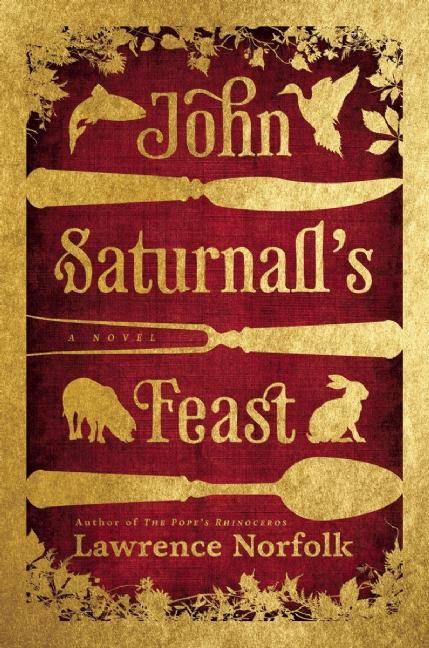 This is my final recommendation: John Saturnall’s Feast by Lawrence Norfolk.
This is my final recommendation: John Saturnall’s Feast by Lawrence Norfolk.
Thanks for sticking with me through this exhaustive tour of the real history behind Game of Thrones. If I’ve imparted even one-tenth of my own enthusiasm for making up theories about Game of Thrones to you, I can safely say that my watch has ended.
More GOT content to stave off your sadness: Which Game of Thrones Character Are You?; 31 Game of Thrones Tattoos; Epic Fantasy Adaptations We Need Post-Game of Thrones.
Source : A Song of White and Red: The Real History Behind A GAME OF THRONES













